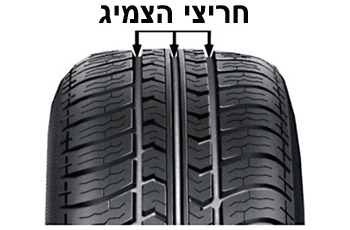Question:1
What is the required air pressure of the vehicle’s spare tire?
Category : Know Your Vehicle
Question:2
You may reduce your vehicle’s fuel consumption by:
Category : Know Your Vehicle
Question:3
What is the function of the vehicle’s Electronic Stability Program (ESP) System?
Category : Know Your Vehicle
Question:4
How should you use the gearbox while driving on a continuous descent?
Category : Know Your Vehicle
Question:5
When we want to verify that the vehicle’s tire air pressure is correct:
Category : Know Your Vehicle
Question:6
What is the function of the ABS system?
Category : Know Your Vehicle
Question:7
Which of the vehicle’s systems might cause an uneven wear of the front tires?
Category : Know Your Vehicle
Question:8
The one of the functions of the grooves in the tyre tread

Category : Know Your Vehicle
Question:9
Who is permitted to repair vehicle safety part failures?
Category : Know Your Vehicle
Question:10
When is it required to exchange the vehicle’s fire extinguisher?
Category : Know Your Vehicle
Question:11
What might happen as a result of brake over- heating?
Category : Know Your Vehicle
Question:12
What should you check when purchasing a new tire for your vehicle?
Category : Know Your Vehicle
Question:13
Does the vehicle’s engine have an effect on safe driving?
Category : Know Your Vehicle
Question:14
What is the consequence of tyre pressure that is too high?
Category : Know Your Vehicle
Question:15
What is the implication of driving a vehicle with a broken headlamp lens?
Category : Know Your Vehicle
Question:16
What are you required to check when one of the vehicle’s lamps is not working?
Category : Know Your Vehicle
Question:17
The required air pressure in the vehicle’s tires:
Category : Know Your Vehicle
Question:18
What are the vehicle’s control systems?
Category : Know Your Vehicle
Question:19
What is “wheel locking”?
Category : Know Your Vehicle
Question:20
What is a hybrid vehicle?
Category : Know Your Vehicle
Question:21
What is the function of the vehicle’s starter?
Category : Know Your Vehicle
Question:22
For what reason might the indicator warning light on the dashboard flash too quickly?
Category : Know Your Vehicle
Question:23
When the hand (parking) brake light on the dashboard is turned on while driving:
Category : Know Your Vehicle
Question:24
An efficient Braking System with ABS:
Category : Know Your Vehicle
Question:25
What is a vehicle GPS navigation system?
Category : Know Your Vehicle
Question:26
When the tire air pressure is too low, it might cause:
Category : Know Your Vehicle
Question:27
What is the required air pressure of the vehicle’s tires?
Category : Know Your Vehicle
Question:28
One of the differences between manual and automatic transmission vehicles is that:
Category : Know Your Vehicle
Question:29
How will you recognize brakes overheating?
Category : Know Your Vehicle
Question:30
When is a blue warning light displayed on the dashboard?
Category : Know Your Vehicle

